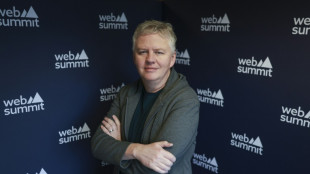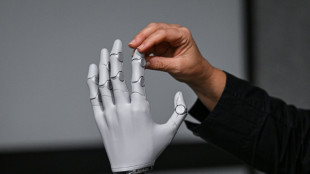
-
 Climate protesters rally in Brazil at COP30 halfway mark
Climate protesters rally in Brazil at COP30 halfway mark
-
Spike Lee gifts pope Knicks jersey as pontiff meets film stars
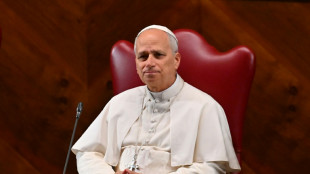
-
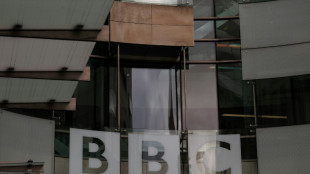 BBC caught in crossfire of polarised political and media landscape
BBC caught in crossfire of polarised political and media landscape
-
'Happy' Shiffrin dominates in Levi slalom for 102nd World Cup win
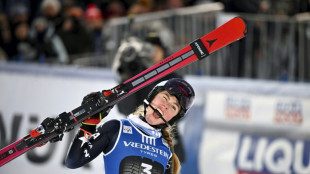
-
 Palestinian national team on 'mission' for peace in Spain visit
Palestinian national team on 'mission' for peace in Spain visit
-
Brazilian 'Superman' cheers child cancer patients in Ghana
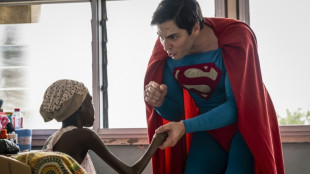
-
 India close in on win over South Africa after Jadeja heroics
India close in on win over South Africa after Jadeja heroics
-
Huge explosions rock industrial area near Argentina's capital
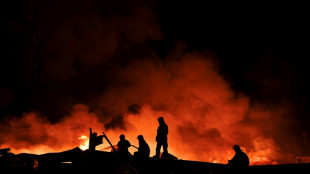
-
 Bezzecchi takes pole for Valencia sprint and MotoGP
Bezzecchi takes pole for Valencia sprint and MotoGP
-
Dominant Shiffrin leads after first slalom run in Levi
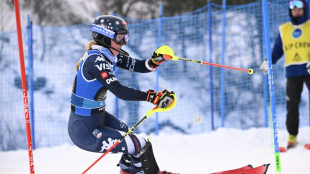
-
 Nine killed in accidental explosion at Indian Kashmir police station
Nine killed in accidental explosion at Indian Kashmir police station
-
Climate protesters to rally at COP30's halfway mark
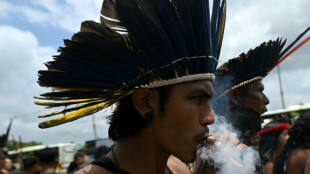
-
 Fighting South Africa lose Rickelton after India 189 all out
Fighting South Africa lose Rickelton after India 189 all out
-
Harmer leads South Africa fightback as India 189 all out

-
 Prison looms for Brazil's Bolsonaro after court rejects his appeal
Prison looms for Brazil's Bolsonaro after court rejects his appeal
-
EU bows to pressure on loosening AI, privacy rules
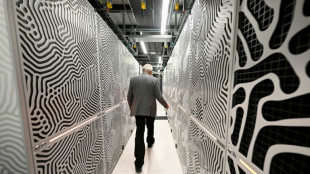
-
 India close in on lead despite South African strikes
India close in on lead despite South African strikes
-
Curry's 49 points propel Warriors in 109-108 win over Spurs

-
 NZ boxer Parker denies taking banned substance after failed test
NZ boxer Parker denies taking banned substance after failed test
-
Australia setback as Hazlewood ruled out of 1st Ashes Test

-
 Australia pace spearhead Josh Hazlewood ruled out of 1st Ashes Test
Australia pace spearhead Josh Hazlewood ruled out of 1st Ashes Test
-
UN Security Council to vote Monday on Trump Gaza plan

-
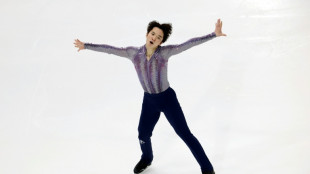 Japan's Tomono leads after men's short program at Skate America
Japan's Tomono leads after men's short program at Skate America
-
China tells citizens to avoid Japan travel as Taiwan row grows

-
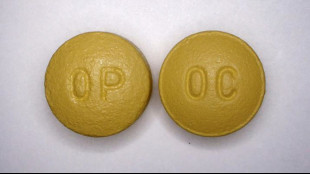 Purdue Pharma to be dissolved as US judge says to approve bankruptcy
Purdue Pharma to be dissolved as US judge says to approve bankruptcy
-
Iran's first woman orchestra conductor inspires

-
 Wood gets all-clear in boost for England
Wood gets all-clear in boost for England
-
Golf's world No. 8 Thomas has back surgery

-
 Rebooted Harlem museum celebrates rise of Black art
Rebooted Harlem museum celebrates rise of Black art
-
'Desperation in the air': immigrant comics skewer Trump crackdown
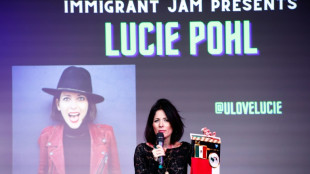
-
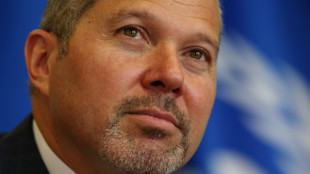 UN regulator says shipping still wants to decarbonize -- despite US threats
UN regulator says shipping still wants to decarbonize -- despite US threats
-
Grant, Kim share halfway lead in LPGA Annika tournament
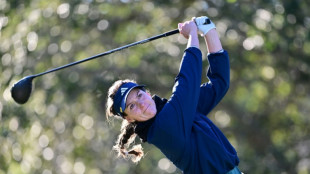
-
 Musk's Grokipedia leans on 'questionable' sources, study says
Musk's Grokipedia leans on 'questionable' sources, study says
-
Trump signs order to lower tariffs on beef, coffee, other goods
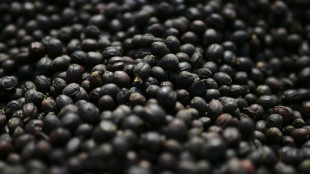
-
 Croatia qualify for 2026 World Cup, Netherlands close, Germany in limbo
Croatia qualify for 2026 World Cup, Netherlands close, Germany in limbo
-
'Last Chance U' coach dies after shooting: US police

-
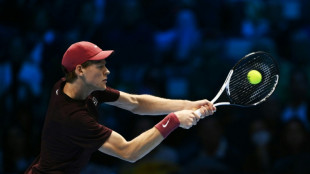 Sinner completes perfect ATP Finals group stage, Auger-Aliassime reaches last four
Sinner completes perfect ATP Finals group stage, Auger-Aliassime reaches last four
-
Woltemade sends Germany past Luxembourg in World Cup qualifier

-
 Croatia qualify for 2026 World Cup with 3-1 win over Faroes
Croatia qualify for 2026 World Cup with 3-1 win over Faroes
-
Kai Trump makes strides but still misses cut in LPGA debut
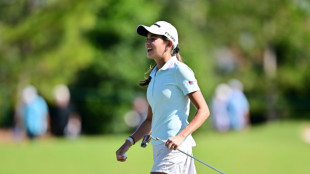
-
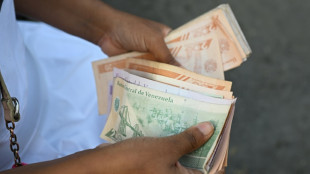 Return to bad days of hyperinflation looms in Venezuela
Return to bad days of hyperinflation looms in Venezuela
-
US airspace recovers as budget shutdown ends

-
 Russia strike on Kyiv apartment block kills six, Ukraine says
Russia strike on Kyiv apartment block kills six, Ukraine says
-
Arrest made in shooting of 'Last Chance U' coach: US police

-
 At COP30, senator warns US 'deliberately losing' clean tech race with China
At COP30, senator warns US 'deliberately losing' clean tech race with China
-
US, Switzerland say deal reached on trade and tariffs

-
 Fossil fuel lobbyists out in force at Amazon climate talks: NGOs
Fossil fuel lobbyists out in force at Amazon climate talks: NGOs
-
Returning Alldritt blames himself for France axing

-
 Stocks struggle on US rates, tech rally fears
Stocks struggle on US rates, tech rally fears
-
A rare oil CEO shows up at COP30, spars with activists
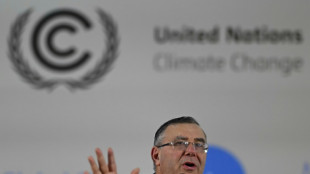

Artists, scientists breathe life into prehistoric woman
With her clear blue eyes and slightly nervous gaze, the reconstructed bust of Mos'anne -- a woman who lived around 10,500 years ago -- is uncannily lifelike.
Reborn via a close partnership between science and art, Mos'anne's bust was created at Belgium's Ghent University as part of a project to explore how the region's last hunter-gatherers lived during the Mesolithic era.
"Part of the project is also understanding the genetics of these people, figuring out their kinship and so on, and to be able to really translate the science that we do to a wider audience," the project's lead researcher, Isabelle de Groote, told AFP.
Scientists chose the skull of Mos'anne -- named by public vote in reference to Belgium's Meuse Valley -- for reconstruction, as it was exceptionally well-preserved.
The bones held a large amount of preserved DNA, making it possible to reconstruct the woman -- aged between 35 and 60 at her death -- with remarkable realism.
"We also know that in the Mesolithic times, she is genetically part of the Western hunter-gatherer group," said de Groote.
Using genetic testing, researchers were able to determine the Mesolithic woman's skin and eye colour.
"This group is known for having very dark skin and blue eyes, a bit like Cheddar Man in Britain," she said, referring to the man who lived in Britain around 10,000 years ago, whose skeleton was discovered in 1903.
- 'Mixed emotions' -
Mos'anne's DNA revealed valuable clues about her appearance but it was the unique skills of Dutch "paleo-artists" Alfons and Adrie Kennis that brought her back to life.
After receiving guidance from the researchers -- including instructions to use ochre pigment on Mos'anne's headband -- the twins began their work, from moulding the skull to the final decorative feather, meticulously sculpting each facial muscle in clay.
"The biggest part of the reconstruction is forming a character," Alfons Kennis said from their Darwin-esque studio in Arnhem.
"You can make a forensic reconstruction... use the data, apply the muscles, apply the skin, but you get no character," Kennis said of their artistic process.
The Kennis brothers -- whose surname means "knowledge" in Dutch -- take about six months to complete a reconstruction.
They gained global recognition in the 2000s, their work exhibited in museums worldwide and featured in specialist publications.
The twins, fascinated by evolution and visual art since childhood, draw inspiration from archived anthropological images of early encounters between isolated populations and researchers.
"At the first meeting, there's nervousness, shyness. People are laughing, maybe out of nerves," said Kennis.
"When a prehistoric ancestor meets you for the first time, you see these mixed emotions... It's these emotions that we want to show."
Much about Mos'anne remains unknown. In Ghent, researchers are still analysing her to find out what she would eat.
With her headband dotted with duck feathers, golden skin, and pierced animal teeth adorning her ears and necklace, the prehistoric woman seems closer to us than ever.
"It was always my wish to be able to make it more tangible in a way," De Groote said.
O.Salim--SF-PST

